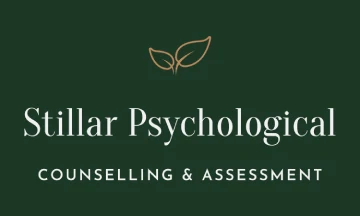Exposure therapy for anxiety is a structured and evidence-based approach that helps individuals face their fears in a controlled and supportive environment.
Anxiety can interfere with daily activities and make even routine tasks feel overwhelming. By gradually confronting fears instead of avoiding them, people can regain confidence and a sense of control over their lives.
Persistent anxiety can create patterns of avoidance that shrink opportunities for personal growth and meaningful experiences. Avoiding feared situations may provide temporary relief. However, it often reinforces anxiety in the long run.
Exposure therapy disrupts this cycle by helping individuals approach their fears step by step. With professional guidance, this process allows anxiety levels to decrease over time. This makes daily life more manageable and fulfilling.
Understanding Exposure Therapy for Anxiety
Exposure therapy works by introducing feared situations or thoughts in a gradual and controlled way. This process helps retrain the brain’s response to anxiety triggers and reduces the intensity of fear over time.
Instead of relying on avoidance or coping mechanisms that limit life experiences, exposure therapy encourages direct engagement with fears to create long-term change.
This therapeutic approach is based on the principle of habituation, where repeated exposure to a feared stimulus leads to a diminished response. Over time, the brain learns that the feared object or situation is not as threatening as previously perceived. The reduction in fear allows individuals to experience a greater sense of control over their emotional responses.
Another important aspect of exposure therapy is cognitive restructuring. By challenging irrational fears and shifting negative thought patterns, individuals develop healthier perspectives on anxiety-inducing situations.
This process helps build confidence and resilience. As a result, it becomes easier to engage in everyday activities without overwhelming distress.
How Avoidance Reinforces Anxiety
Avoidance may seem like a quick fix for anxiety. However, it often deepens the problem. When people steer clear of situations that trigger fear, they miss opportunities to learn that these situations are not actually dangerous.
Each time they avoid a feared scenario, the belief that it is unmanageable strengthens. This makes future encounters even more distressing.
This cycle of avoidance can extend into multiple areas of life–restricting personal growth, relationships, and professional opportunities. Over time, individuals may find themselves withdrawing from social interactions, skipping important responsibilities, or turning down experiences that could bring joy and fulfillment.
Gradually confronting fears instead of avoiding them, exposure therapy helps break this pattern. Small, repeated exposures allow individuals to experience their fears in a safe and controlled setting, reducing distress with each encounter. Through this process, confidence builds, and anxiety loses its grip on daily life.
Types of Exposure Therapy Techniques
Different techniques within exposure therapy cater to different types of fears and individual comfort levels. Each approach is specific to the person’s precise challenges and treatment goals.
In Vivo Exposure involves directly facing anxiety-provoking situations in real life. For example, someone with social anxiety may practice ordering food at a restaurant or initiating conversations with strangers. By repeatedly exposing themselves to these situations, fear responses diminish, and confidence grows.
Imaginal Exposure is useful when real-life exposure is not possible or practical. In this approach, individuals vividly imagine anxiety-inducing scenarios while describing their thoughts and emotions. This method helps process distressing memories or fears in a controlled manner.
Interoceptive Exposure focuses on physical sensations that trigger anxiety, such as a racing heart or shortness of breath. Individuals learn that these physical responses are not harmful by deliberately inducing these sensations in a safe setting. This technique is particularly effective for those with panic disorder or health-related anxieties.
Combining these methods allows therapists to create a complete treatment plan that addresses multiple aspects of anxiety. Individuals develop resilience and regain control over their emotional responses by working through exposures systematically.
Anxiety Therapy and Exposure-Based Treatment
Exposure therapy is most effective when included in a broader anxiety therapy plan. Professional guidance helps individuals progress at a pace that feels safe while maintaining momentum toward meaningful change.
A trained therapist provides emotional support, tracks progress, and adjusts techniques as needed.
Therapists use structured approaches such as fear hierarchies, which involve ranking anxiety-provoking situations from least to most distressing. Clients begin with lower-level exposures and work their way up, building confidence with each step. A structured process prevents excessive distress and allows for gradual improvement.
Individual counseling is instrumental in exposure-based treatment by offering personalized support customized to each person’s unique needs. One-on-one therapy sessions provide a safe space to discuss fears, set goals, and explore strategies for managing anxiety outside of exposure.
The therapeutic relationship promotes trust and encourages open communication, which can improve treatment outcomes.
When individuals feel supported in their exposure journey, they are more likely to push through discomfort and reach long-term success. Therapy not only helps with exposure work but also deals with underlying thought patterns and emotional barriers that contribute to anxiety. This can lead to more sustainable progress.
Individual Counselling: A Personalized Approach to Anxiety Treatment
Facing anxiety can feel terrifying. However, individual counseling presents a focused and structured way to work through fears. One-on-one therapy creates a safe space where clients can explore their anxiety without judgment.
Unlike group settings, this approach allows therapists to specialize sessions to each person’s experiences, so strategies are in keeping with specific triggers and goals. Working directly with a therapist, clients can take their time progressing through anxiety treatment and gain confidence with each step.
Personalized therapy also adapts to different comfort levels. Some individuals benefit from a slower introduction to exposure therapy for anxiety. Meanwhile, others may be ready for a more direct approach.
Customizing the pace helps reduce feelings of being overwhelmed, which makes it easier to stay engaged in the process. Anxiety therapy within individual sessions also supports emotional resilience. This allows clients to explore underlying fears and develop coping strategies in a way that feels manageable.
Overcoming Challenges in Exposure Therapy
Starting exposure therapy for anxiety can bring up distinct concerns. Many individuals worry about facing fears head–on, questioning if they can handle discomfort.
However, anxiety thrives on avoidance, and breaking free from its grip requires small, controlled steps forward. With professional guidance, exposure therapy introduces fears gradually and makes the process more approachable.
Therapists help individuals reframe their anxiety, teaching them that fear does not have to dictate their choices. While exposure can feel uncomfortable at first, repeated sessions help lessen its intensity over time.
The brain learns that the feared situation is not as threatening as it once seemed, reducing automatic fear responses. This gradual exposure process builds confidence and shows individuals they can face their anxieties without retreating.
Persistence plays a big part in exposure therapy success. Many clients experience uncertainty in the early stages. However, consistent practice brings noticeable change. Support from a therapist helps to confirm that each step is taken at a manageable pace. They will help reinforce progress while addressing setbacks.
Over time, exposure therapy transforms how individuals interact with fear. This helps them regain control over their daily lives.
EMDR Therapy and Its Function in Trauma-Related Anxiety
For individuals whose anxiety stems from past trauma, EMDR therapy brings another path toward healing. Eye Movement Desensitization and Reprocessing (EMDR) is designed to help process distressing memories, reducing their emotional hold.
This therapy guides individuals through past experiences while using guided eye movements, sounds, or taps to encourage reprocessing. By linking thoughts, emotions, and physical sensations, EMDR helps reshape how the brain responds to traumatic memories. Unlike traditional talk therapy, EMDR does not require extended discussions about painful events. Instead, it focuses on changing how those memories are stored in the brain.
Many individuals find that after EMDR sessions, memories that once triggered intense anxiety lose their grip. This shift allows for a more balanced emotional response and makes daily life feel less devastating.
For those struggling with trauma-related anxiety, combining EMDR therapy with exposure therapy for anxiety can offer support. Exposure therapy helps individuals face current fears. Meanwhile, EMDR deals with the deeper emotional wounds contributing to anxiety. Together, these approaches work to lessen anxiety’s impact, assisting individuals to reclaim their sense of security and emotional stability.
Stillar Psychological: Supporting Your Anxiety Recovery
Stillar Psychological knows that anxiety affects individuals in unique ways. Our team of skilled therapists specializes in exposure therapy for anxiety, individual counselling, and trauma-focused treatments like EMDR therapy.
With extensive training and experience, we offer compassionate, evidence-based care to help clients regain control over their lives.
We provide mental health services for all ages, supporting children, teens, and adults through their anxiety journeys. Whether someone is in search of help for the first time or wants to deepen their progress, we customize therapy to match personal goals.
Our therapists create a welcoming environment where individuals can explore their fears at a comfortable pace, developing lasting skills to manage anxiety.
Taking the first step toward therapy can feel daunting, but support is available. Our team is dedicated to guiding clients through anxiety treatment with patience and expertise. We help them build confidence in themselves and their ability to face fears.
If you’re ready to take the first step toward overcoming anxiety, reach out to Stillar Psychological today to book an appointment.





















